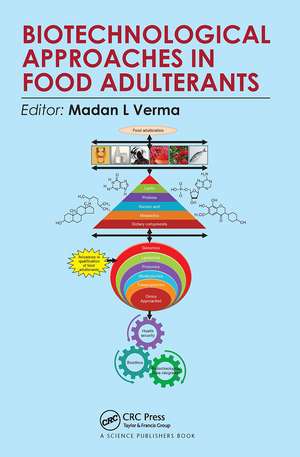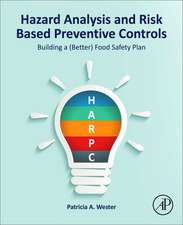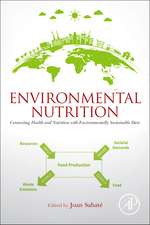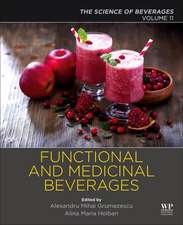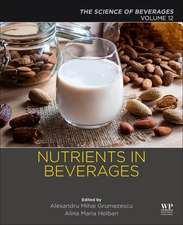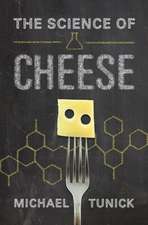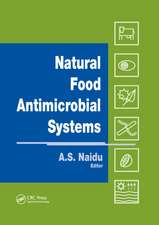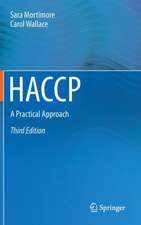Biotechnological Approaches in Food Adulterants
Editat de Madan L Vermaen Limba Engleză Paperback – 30 mai 2022
The book provides insights to the most recent innovations, trends, concerns, and challenges in food adulterants. It identifies key research topics and practical applications of modern cutting-edge technologies employed for detection of food adulterants including: expansion of food adulterants market, potential toxicity of food adulterants and the prevention of food adulteration act, cutting-edge technology for food adulterants detection, and biosensing and nanobiosensing based detection of food adulterants. There is need for new resources in omics technologies for the application of new nanobiotechnology. Biotechnological Approaches in Food Adulterants provides an overview of the contributions of food safety and the most up-to-date advances in omics and nanobiotechnology approaches to a diverse audience from postgraduate students to researchers in biochemical engineering, biotechnology, food technologist, environmental technologists, and pharmaceutical professionals.
| Toate formatele și edițiile | Preț | Express |
|---|---|---|
| Paperback (1) | 487.58 lei 6-8 săpt. | |
| CRC Press – 30 mai 2022 | 487.58 lei 6-8 săpt. | |
| Hardback (1) | 1279.68 lei 6-8 săpt. | |
| CRC Press – 19 noi 2020 | 1279.68 lei 6-8 săpt. |
Preț: 487.58 lei
Preț vechi: 529.98 lei
-8% Nou
Puncte Express: 731
Preț estimativ în valută:
93.31€ • 101.32$ • 78.38£
93.31€ • 101.32$ • 78.38£
Carte tipărită la comandă
Livrare economică 22 aprilie-06 mai
Preluare comenzi: 021 569.72.76
Specificații
ISBN-13: 9780367560676
ISBN-10: 0367560674
Pagini: 344
Ilustrații: 19 Tables, black and white; 6 Line drawings, color; 21 Line drawings, black and white; 2 Halftones, color; 5 Halftones, black and white; 8 Illustrations, color; 26 Illustrations, black and white
Dimensiuni: 156 x 234 x 25 mm
Greutate: 0.45 kg
Ediția:1
Editura: CRC Press
Colecția CRC Press
ISBN-10: 0367560674
Pagini: 344
Ilustrații: 19 Tables, black and white; 6 Line drawings, color; 21 Line drawings, black and white; 2 Halftones, color; 5 Halftones, black and white; 8 Illustrations, color; 26 Illustrations, black and white
Dimensiuni: 156 x 234 x 25 mm
Greutate: 0.45 kg
Ediția:1
Editura: CRC Press
Colecția CRC Press
Cuprins
Overview of food adulteration from the biotechnological perspective. An overview of potential toxicity of food adulterants and food adulteration act. Advances in technologies used in the detection of food adulteration. Food colours: the potential sources of food adulterants and their food safety concerns. Innovative and emerging technologies in the detection of food adulterants. Contributions of Omics approaches for the detection of food adulterants. Advances in proteomics approaches for food authentication. Contributions of fingerprinting food in the detection of food adulterants. Nanosensors as potential multisensor systems to ensure safe and quality food. Global perspective of sensors for the detection of food adulterants. Application of nanoscience and nanotechnology towards advancement of safety issues of foods. Computing in biotechnology for food adulterants.
Notă biografică
Dr. Madan L Verma is an assistant professor in the Department of Biotechnology at the Indian Institute of Information Technology Una, HP, India. He is a senior researcher who has developed sustainable processes through his expertise in bioprocessing and nanobiotechnology. He employs nanotechnology approaches for enhancing the effectiveness of bioprocesses that have application in food biotechnology, pharmaceutical, and bio-energy. He has many international and national awards to his credits. Dr. Verma has published 50 research articles in peer-reviewed journals, and 35 book chapters, and has edited 7 books on industrial biotechnology.
Descriere
The book covers key topics in food adulteration and the applications of cutting-edge technologies in its detection. Topics include growth of food adulterants, potential toxicity, legislations to prevent food adulteration, technology for food adulterants detection, and biosensing and nanobiosensing based detection of food adulterants.
